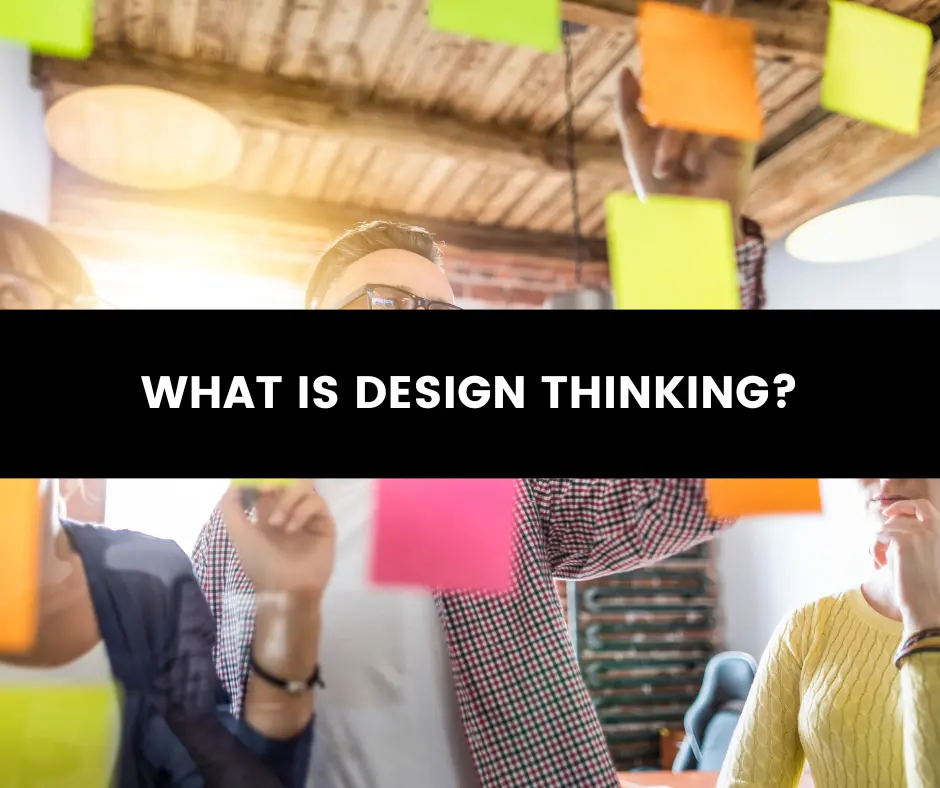WHAT IS DESIGN THINKING?
Design thinking is a method (and process) of solving specific problems, based on understanding the user, comprehending his (or her) problem and finding alternative solutions.
The idea of design thinking was first formulated by Herbert Simon in 1969 in his book “The Sciences of the Artificial”. Later, scientists at Stanford University further developed it and founded the Stanford d.school, a “place for researchers and experimenters” that popularizes this approach.
In some companies (like Google), design thinking becomes a paradigm and even an ideology, where teams of researchers and developers use this method to come up with and test new ideas.
WHAT ARE THE THREE MAIN PRINCIPLES OF DESIGN THINKING?
1.EMPATHY: the ability to “put yourself in the shoes” of another person, to understand his feelings and emotions;
2.BREADTH: the ability to see the problem both from a “birds-eye view” and in all possible details;
3.EXPERIMENT: the willingness to try, fail, and try again.
WHY DO YOU NEED DESIGN THINKING?
This method is great for creating human-centric products and services. It is used to overcome stereotypes and solve problems with the help of “outside the box” thinking.
Most often, design thinking is used in UX/UI design and development when creating structures and interfaces for sites and applications. But this method is not only suitable for digital products. It can be used in any area where it is necessary to solve a specific problem of a particular user: from designing a business center to renovating a park zone, from improving the working conditions of couriers to organizing logistics.
WHAT ARE THE BENEFITS OF DESIGN THINKING FOR BUSINESSES?
1.It helps to grow loyal customers as they will enjoy a product based on their interests;
2.It stimulates the culture of innovation, developing creative thinking in teams;
3.It accelerates time-to-market and helps avoid waste because painstaking research and free experimentation enables creating successful and viable solutions.
WHAT ARE THE PHASES OF DESIGN THINKING?
The design thinking process goes through six stages, which can be divided into two phases:
- divergent (collecting information and gathering different solutions);
- convergent (analyzing the whole set of ideas and finding the best solution).
WHAT ARE THE STAGES OF DESIGN THINKING?

EMPATHY
At this stage, the user’s experience and context are carefully examined, his desires and motives are clarified, requests are determined. For a detailed study, the team conducts in-depth interviews, observing the user’s environment and habits and collecting information about the user from open sources (social networks, media and statistics).
FOCUS
After “empathy”, the researchers process all the received information and detect the main problem of the user. The meaning of this step is to formulate a specific question for further work. It is important to clearly formulate key observations and if possible, visualize them. You might have seen the wall with many stickers connected by strings in detective or police movies. This is a great example of “focus” stage.
IDEAS GENERATION
It’s a stage of searching for multiple solutions to a single question. At the “ideas generation” stage, any insights and crazy ideas are allowed. Research groups work in brainstorming mode. A team of specialists from different fields gather in one room in order to fruitfully generate a bunch of concepts.
IDEA SELECTION
From all the brainstormed ideas it is time to choose one, concentrating on it entirely. The team votes for one solution or combines several ideas into one.
PROTOTYPING
When a decision is finally made, the team begins to confirm or reject their hypotheses. At this stage, using simple tools and scrap materials prototypes are created to determine the viability of the idea. These prototypes need to be cheap so the idea can be easily rejected if it doesn’t work. For example, Lego is great for prototyping landscapes, cities and infrastructure. Prototypes of apps and websites are quickly assembled from sketches on separate sheets of paper.
TESTING
Finally, the prototype that “survived” receives feedback from a potential user. At this stage it is important to understand how successfully the chosen solution can coexist with reality. The prototype is given to the users, while the team observes how users interact with the product. Normally users are encouraged to give their detailed feedback: what they think is convenient, what they don’t like and why.
IN A NUTSHELL
Design thinking starts with users and your desire to create a better future for them. It does not require superpowers and is safe to try at home.
In practice, the prototype, for example, can be made with the help of paper, scissors and glue. And the whole process is just a set of simple one-by-one steps.
